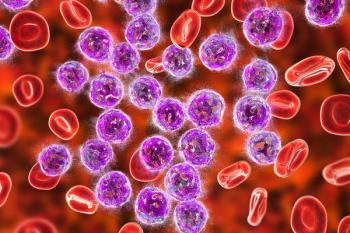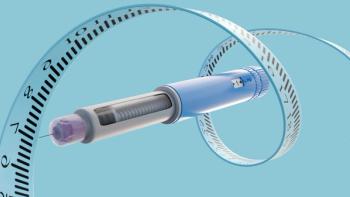
FDA Approves Daratumumab and Hyaluronidase-fihj for High-Risk Smoldering Multiple Myeloma
Key Takeaways
- Daratumumab and hyaluronidase-fihj are approved for high-risk smoldering multiple myeloma, administered subcutaneously in a specific dosing schedule.
- The AQUILA trial demonstrated significant efficacy, with a 51% reduction in disease progression or death risk compared to active monitoring.
The FDA approves daratumumab and hyaluronidase for high-risk smoldering multiple myeloma, significantly improving patient outcomes and progression-free survival.
The FDA has approved daratumumab and hyaluronidase-fihj (Darzalex Faspro; Janssen Biotech, Inc.) for adults with high-risk smoldering multiple myeloma (SMM), with a recommended dose of 1800 mg of daratumumab and 30,000 units of hyaluronidase, administered subcutaneously over approximately 3 to 5 minutes.1
Efficacy of Daratumumab and Hyaluronidase-Fihj
The efficacy of daratumumab and hyaluronidase-fihj as a monotherapy versus active monitoring was evaluated in the open-label, randomized AQUILA trial (NCT03301220), including a total of 390 patients with high-risk SMM. Patients included in the study were randomly assigned to receive daratumumab and hyaluronidase-fihj 1800 mg/30,000 units administered subcutaneously once weekly for the first 8 weeks, every 2 weeks from weeks 9 to 24, and every 4 weeks starting at week 25. Treatment continued for up to 39 cycles or until multiple myeloma was diagnosed or unacceptable toxicity occurred.1,2
Among the study participants, 41% of patients had 2 or more high-risk criteria for SMM, including elevated serum monoclonal protein levels, an abnormal serum-free light chain ratio, or increased bone marrow plasma cells.1
Efficacy was measured by progression-free survival (PFS), defined as the time to multiple myeloma progression or death, per criteria from the International Myeloma Working Group (IMWG). The results demonstrated that median PFS was not reached in the daratumumab and hyaluronidase-fihj group, compared with 41.5 months in the active monitoring group. The treatment significantly reduced the risk of disease progression or death by 51% (HR .49; 95% CI: 0.36-0.67; p <0.0001).1,2
What is SMM?
SMM is a blood and bone marrow disorder that can become active multiple myeloma (MM). The disease can take years to develop into the rare blood cancer, and in some cases, individuals with SMM may never develop active MM, according to data from Cleveland Clinic.3
Individuals with SMM usually do not experience any symptoms. The condition is usually discovered during routine blood tests that detect abnormal plasma cells producing M proteins. While blood tests and bone marrow biopsy can confirm the presence of the abnormal cells, the disease does not cause damage or symptoms.3
The condition progresses to MM at approximately 10% per year over the first 5 years following diagnosis, 3% per year over the next 5 years, and 1.5% per year after. SMM is also present in nearly .5% of the population above the age of 40 years and accounts for nearly 15% of all newly diagnosed MM cases. However, the disorder impacts individuals over the age of 60 with a median diagnosis age between 62 and 67.3,4
REFERENCES
1. FDA approves daratumumab and hyaluronidase-fihj for high-risk smoldering multiple myeloma. FDA. News release. November 6, 2025. Accessed November 6, 2025. https://www.fda.gov/drugs/resources-information-approved-drugs/fda-approves-daratumumab-and-hyaluronidase-fihj-high-risk-smoldering-multiple-myeloma
2. A Study of Subcutaneous Daratumumab Versus Active Monitoring in Participants With High-Risk Smoldering Multiple Myeloma. National Library of Medicine. Updated October 10, 2025. Accessed November 6, 2025. https://www.clinicaltrials.gov/study/NCT03301220
3. Rajkumar, S.V., Kumar, S., Lonial, S. et al. Smoldering multiple myeloma current treatment algorithms. Blood Cancer J. 12, 129 (2022). https://doi.org/10.1038/s41408-022-00719-0
Newsletter
Stay informed on drug updates, treatment guidelines, and pharmacy practice trends—subscribe to Pharmacy Times for weekly clinical insights.

















































































































































































































